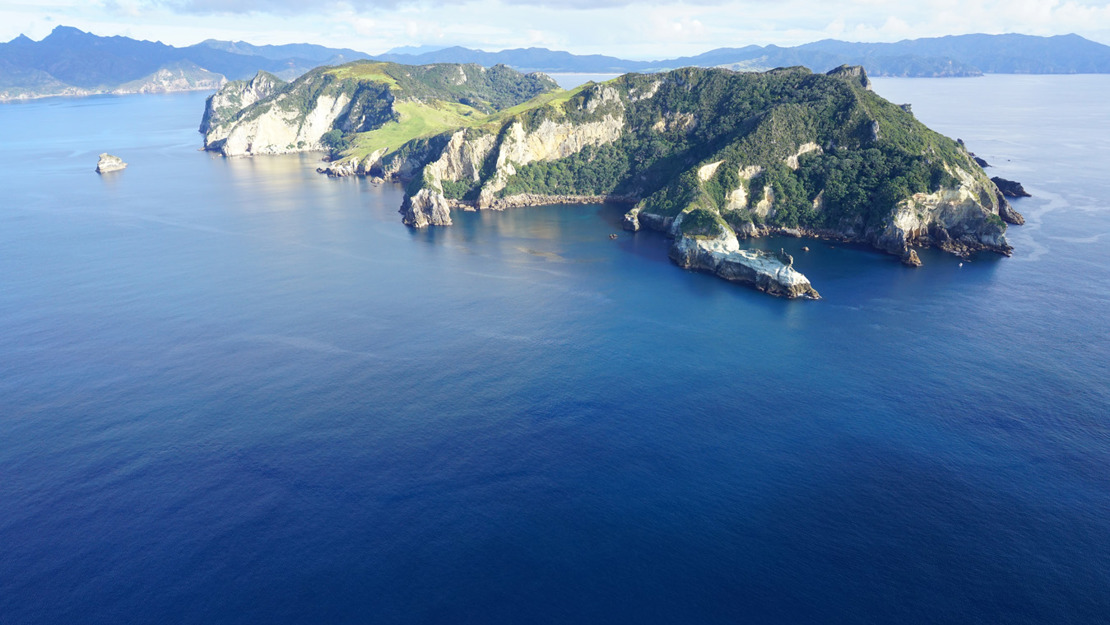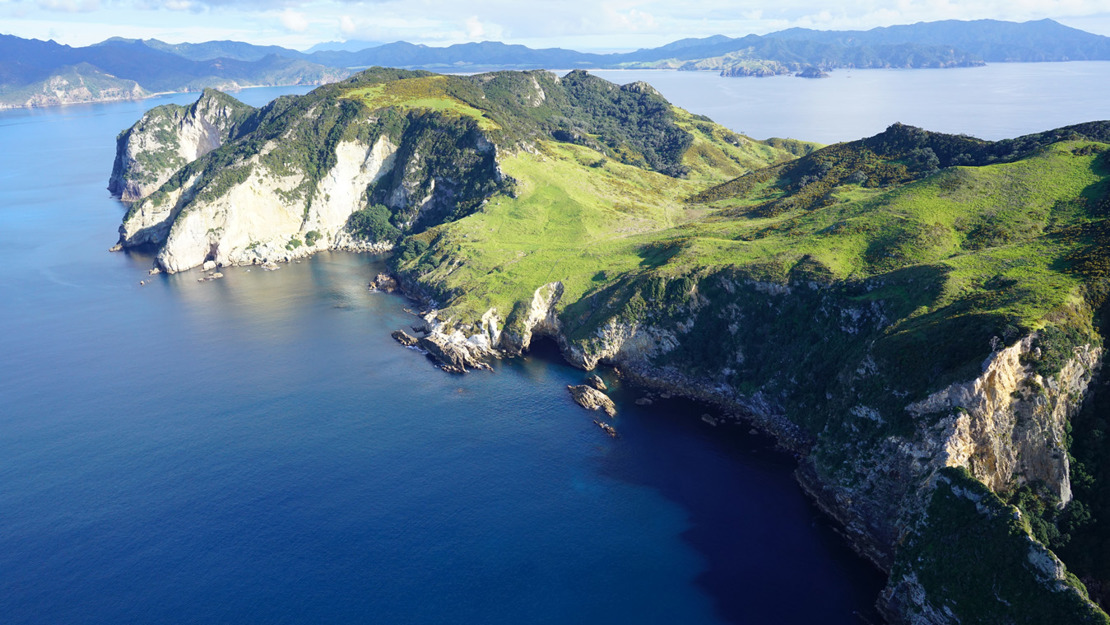Rakitu Island
Size: 315 hectares
Area description
Rakitu Island (formerly known as Arid Island) is a scenic reserve administered by the Department of Conservation. It is situated 2.5 kilometers off the northeast coast of Aotea / Great Barrier Island.
The biodiversity focus area covers the entire island and adjacent small islets.

Key ecosystems
Rakitu Island is the eroded remains of a volcano. It is fringed with steep cliffs with a small harbour on the northern side of the island.
Above the cliffs, there are streams, a small wetland at the head of the central stream and two main valleys. Approximately one-third of Rakitu is covered in original and regenerating coastal forest (WF4). The other third is regenerating kānuka forest and scrub (VS2) and the remaining central third is retired pasture.
Vegetation
Vegetation surveys have recorded high native plant diversity with examples of coastal vegetation composition not found on the Tāmaki Makaurau / Auckland mainland. The coastal forest (WF4) is dominated by pōhutukawa and taraire. Other canopy species include:
- kohekohe
- tawaroa
- rewarewa
- pūriri
- karaka
- coastal maire
- tawāpou.
The steep coastal cliffs (CL1) support very little vegetation but there are several fern species, coastal herbs and shrubs. There are the occasional coastal trees including pōhutukawa, tawāpou, large-leaved milk tree and coastal maire.
The vegetation includes large-leaved forms of rangiora and kawakawa, a phenomenon known as island gigantism.

Native fauna
A recent study of seabird species on Rakitu and the surrounding islets found:
- ōi (grey-faced petrel)
- pakahā (fluttering shearwater)
- Cook’s petrel
- kororā (little penguin)
- kāruhiruhi (pied shag)
- karoro (black-backed gull).
Rakitu Island lies on a seabird highway which spans a chain of pest-free islands. These span from the Poor Knights islands north of Whangarei to the Mercury islands south of Great Barrier Island.
Kākā and tūī were also recorded on the main island. Pāteke (brown teal) were observed in the cove during an earlier study.
Weka were introduced to Rakitu in 1951. Sixty weka were subsequently removed from the island in 2018 while the rat eradication programme took place. The weka have since been re-released on the island.
It is hoped that the removal of rats will assist seabird species to reestablish successful breeding colonies and allow the island to return to a more natural state.



